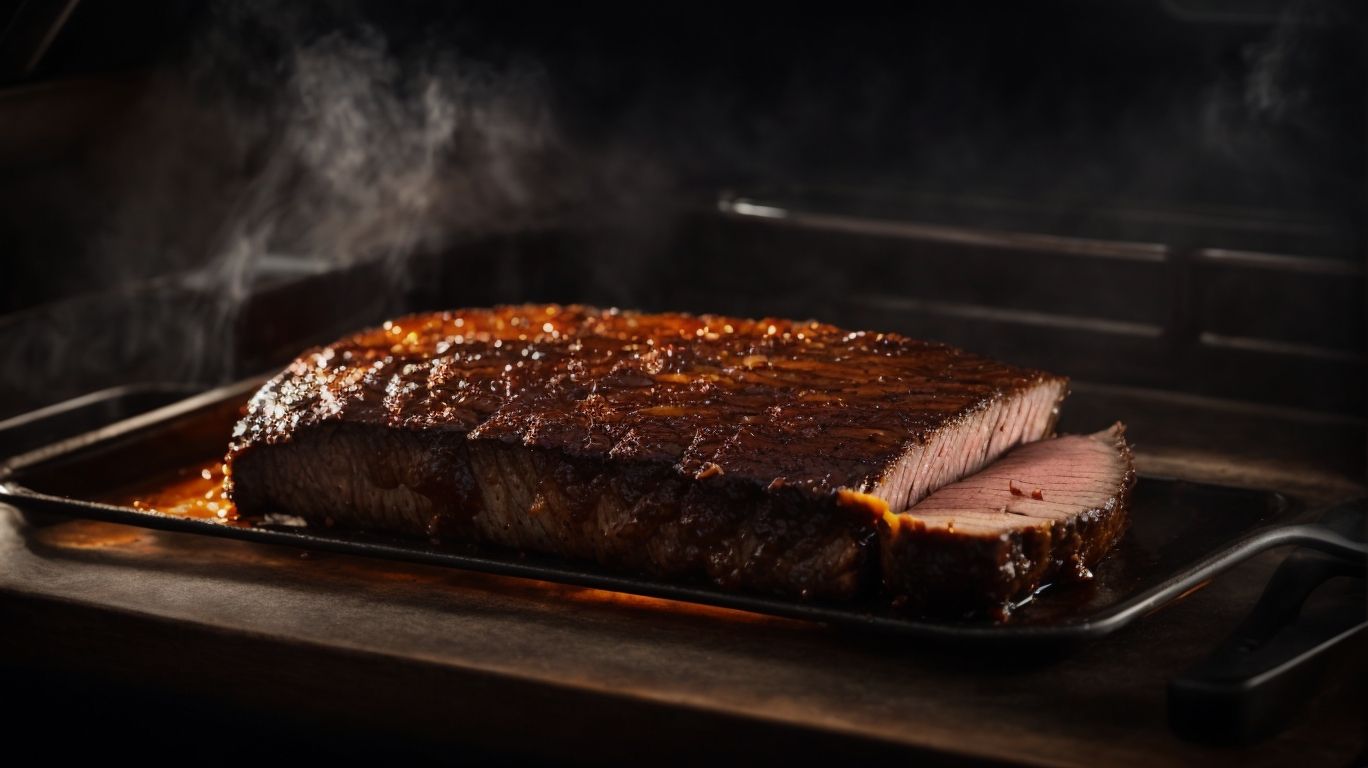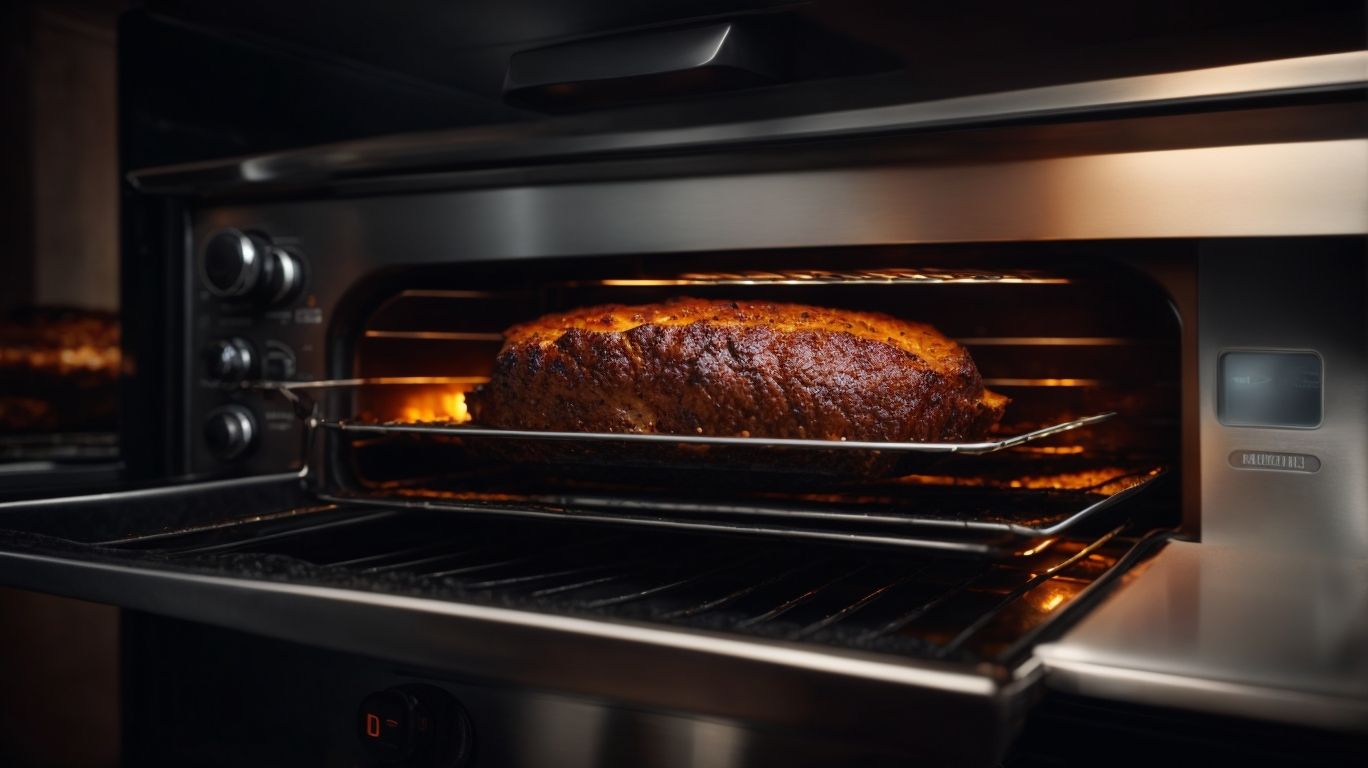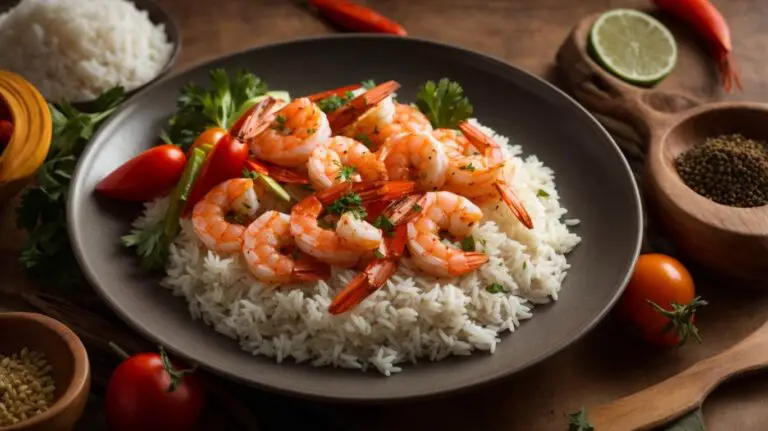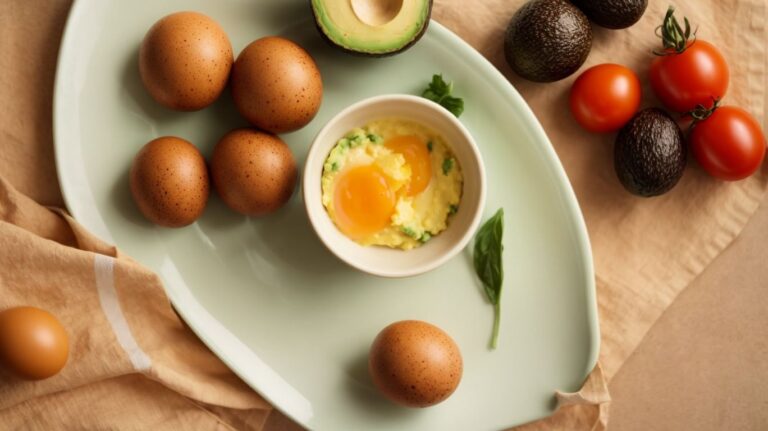How to Cook a Brisket on the Oven?
Are you looking to master the art of cooking brisket in the oven? Look no further! In this comprehensive guide, we will cover everything you need to know about preparing, cooking, and serving the perfect brisket.
From choosing the right cut of brisket to marinating and seasoning techniques, we’ve got you covered. Join Chris Poormet, culinary blogger of the year, as we dive into the world of brisket cooking and make your next meal a memorable one.
Key Takeaways:
1.
2.
3.
What is Brisket?

Credits: Poormet.Com – Jack White
Brisket is a popular cut of beef known for its rich flavor and tenderness, often cooked low and slow to achieve a melt-in-your-mouth texture.
Typically, brisket comes from the chest of the cow and contains a good amount of connective tissue, which breaks down during the slow cooking process, resulting in a juicy and flavorful meat. One of the most common methods to prepare brisket is smoking, where it is infused with a smoky flavor over several hours. Alternatively, brisket can also be oven-roasted to perfection, maintaining its moisture and tenderness. To elevate the taste, using a perfectly balanced dry rub or a mix of seasonings is crucial to enhance its natural flavors, creating a mouthwatering dish that is sure to impress.
How to Choose the Right Brisket?
Selecting the perfect brisket involves considering factors like the cut (flat or whole), marbling, and thickness to ensure a delicious end result.
In terms of choosing a quality brisket, opt for a cut that suits your cooking needs. The flat cut, also known as the “first cut,” is leaner and cooks faster, making it a desirable choice for those looking for a quicker meal. On the other hand, the whole cut, which includes both the flat and the point, is richer in flavor and more forgiving during the cooking process. Marbling plays a crucial role in the taste and tenderness of the brisket – look for distinct streaks of fat throughout the meat for optimal flavor development.
What are the Different Cuts of Brisket?
Brisket comes in two primary cuts: the flat, leaner portion that’s ideal for slicing, and the point, fattier section that offers rich, juicy bites.
In terms of the brisket flat, this cut contains less fat which makes it perfect for those seeking a leaner option. Its uniform thickness cooks evenly, resulting in slices that are consistent in texture and tenderness. On the other hand, the brisket point boasts more marbling, creating a moist and flavorful finish. This section is often used for chopped or shredded dishes due to its succulent and tender nature.
Regarding cooking methods, the flat is popular for traditional low and slow cooking, best suited for smoking or braising. The point, with its higher fat content, can withstand longer cooking times without drying out. Many pitmasters prefer to separate the two cuts during cooking to ensure each part is treated according to its unique requirements.
Preparing the Brisket for Cooking

Credits: Poormet.Com – Kenneth Rodriguez
Before cooking, it’s essential to trim excess fat, apply a flavorful dry rub or seasoning, and optionally marinate the brisket for enhanced taste.
Trimming excess fat from the brisket is crucial as it ensures that the meat cooks evenly and prevents it from becoming too greasy. In terms of seasonings, there is a wide variety to choose from such as simple salt and pepper to more complex blends containing garlic, paprika, cumin, and more, allowing you to customize the flavor profile to your preference. Marinating the brisket not only adds extra layers of taste but also helps tenderize the meat, making it juicier and more succulent.
How to Trim the Brisket?
Trimming brisket involves carefully removing excess fat, ensuring even thickness for consistent cooking, and sometimes adjusting the grain for optimal tenderness.
Before you begin trimming your brisket, it’s essential to gather the right tools including a sharp knife, cutting board, and paper towels for easy clean-up. Start by examining the brisket and identifying areas with excessive fat – these have to be carefully removed to avoid chewy and greasy results.
Next, remember to slice against the grain, which helps break down tough muscle fibers, ensuring a tender and flavorful bite. Be attentive to the direction of the muscle fibers while cutting, which usually run lengthwise on a brisket.
To achieve even slices, maintain a steady hand and consistent thickness throughout the brisket. Practice makes perfect, so don’t rush the process and take your time to master the art of trimming brisket.”
What Seasonings to Use for Brisket?
When seasoning brisket, options like dry rubs with a blend of spices, herbs, and salt can enhance the meat’s natural flavors, especially for smoked preparations.
Choosing the right combination of ingredients for a dry rub is crucial in achieving a balanced flavor profile for your brisket. Some popular options include paprika, garlic powder, onion powder, brown sugar, and cayenne pepper. These spices not only add depth to the meat but also create a beautiful crust when cooked.
For those looking to experiment, adding coffee grounds, cumin, or even citrus zest can provide a unique twist to the traditional rub. Consider the cooking method as well; for oven-cooked brisket, a sweeter rub with honey and molasses can caramelize beautifully, while a smokier blend with chipotle and mustard seeds complements the smokiness of a barbecue.”
How to Marinate the Brisket?
Marinating brisket involves letting the meat soak in a flavorful liquid or mixture, enhancing taste and tenderness, especially when preparing it in the oven.
When marinating brisket, it is essential to choose a suitable liquid or marinade that complements the rich flavor of the meat. Common options include a mixture of soy sauce, Worcestershire sauce, garlic, onion, and brown sugar for a perfect balance of sweet and savory notes.
To ensure the marinade penetrates the meat deeply, it is recommended to let it sit in the refrigerator for at least 8-12 hours. Wrapping the marinated brisket in foil or using an airtight container helps lock in moisture during cooking, resulting in a juicy and tender final dish.
Cooking Brisket on the Oven
Cooking brisket in the oven requires precise temperature control and an extended cooking time to achieve the desired tenderness and flavor infusion.
Preheat your oven to 275°F to cook the brisket slowly and retain its juices. For a standard-sized brisket, calculate approximately 1.5 hours of cooking time per pound of meat. Once the oven reaches the desired temperature, season the brisket generously with your favorite rub or marinade, ensuring to coat all sides evenly.
- Place the brisket in a roasting pan, fat side up, and cover it tightly with foil to help trap moisture and create a steamy environment.
This technique will help prevent the meat from drying out during the long cooking process.
Step-by-Step Guide to Cooking Brisket on the Oven
To cook brisket in the oven, start by preheating to the recommended temperature, seasoning the meat, wrapping it in foil, and monitoring the cooking time meticulously.
Once the brisket is seasoned and wrapped in foil, place it in a roasting pan to catch any drippings and prevent a mess in the oven. Maintaining a consistent oven temperature is crucial for a perfectly cooked brisket; you can achieve this by using an oven thermometer to verify the accuracy of the temperature setting.
Slow cooking is key for tenderizing brisket, so be patient and resist the temptation to increase the temperature. For an extra layer of flavor, consider adding a cup of beef broth or a splash of red wine to the foil pack before sealing it tightly, ensuring the meat stays moist throughout the cooking process.
What Temperature to Cook Brisket at?
Cooking brisket at a low and slow temperature, typically around 225-250°F, allows the meat to gradually tenderize and develop deep flavors in the oven.
Brisket, known for its rich and robust flavor, is a cut of meat that requires patience and precision in cooking. The low temperature ensures that the muscle fibers break down slowly, resulting in a tender and juicy texture. This method is crucial as it prevents the meat from becoming tough and chewy.
By maintaining a consistent temperature range of 225-250°F throughout the cooking process, you guarantee that the collagen in the meat breaks down properly, infusing the brisket with its signature melt-in-your-mouth texture and enhancing its natural flavors.
How Long to Cook Brisket on the Oven?
The cooking time for brisket in the oven varies based on factors like the weight, thickness, and whether it’s a whole piece or sliced portions, typically ranging from several hours to half a day.
When determining how long to cook brisket in the oven, consider that thicker cuts and whole pieces will require more time for the heat to penetrate fully, resulting in longer cooking durations. The composition of the meat, such as the presence of fat marbling, can impact the cooking time as well.
For example, a 5-pound brisket may need around 5 to 7 hours at a low temperature of around 225°F (107°C) to become tender and flavorful, while sliced brisket may cook in a shorter timeframe due to increased surface area for heat absorption.
How to Tell if Brisket is Done?

Credits: Poormet.Com – Gary Nguyen
To check if brisket is done, use a meat thermometer to ensure it reaches the recommended internal temperature, then let it rest before slicing for optimal juiciness.
Alternatively, visually inspect the brisket for key indicators of doneness such as a dark, caramelized bark on the outside and a tender, easily separable texture. The color of the meat should have changed, and when probed with a fork, it should feel tender and yield without much resistance. Letting the brisket rest post-cooking is crucial as it allows the juices to redistribute, resulting in a more flavorful and moist end product.
When slicing brisket, remember to cut against the grain to ensure maximum tenderness. Cut thin slices to maintain the meat’s integrity and prevent it from becoming chewy. Consider the type of brisket you have – packer-cut (whole) or flat – and adjust your slicing technique accordingly to showcase the best aspects of the meat.
Serving and Enjoying your Brisket

Credits: Poormet.Com – Nicholas Sanchez
Serving brisket involves slicing it against the grain for maximum tenderness, pairing it with complementing side dishes, and understanding storage methods for leftovers.
In terms of slicing brisket, it’s crucial to cut perpendicular to the muscle fibers to ensure a more tender eating experience. This technique helps break down the muscle fibers and reduces chewiness. A useful tip is to slice brisket thinly, about a quarter-inch thick, to enhance the overall texture.
For side dishes, consider classics like coleslaw or potato salad to balance out the richness of the meat. The refreshing crunch of coleslaw or the creaminess of potato salad can complement the savory flavors of brisket wonderfully.
When storing leftover brisket, wrap it tightly in foil or plastic wrap and refrigerate promptly. Properly stored brisket can last for 3-4 days in the fridge and can also be frozen for longer storage. To reheat, place the brisket in an oven-safe dish with a bit of broth to keep it moist and warm it at a low temperature to retain its juiciness.
How to Slice Brisket?
When slicing brisket, cut against the grain to ensure tender pieces ideal for sandwiches, tacos, or standalone servings that retain the meat’s moisture and flavor.
To properly slice brisket, always start by identifying the direction of the grain – those visible lines running through the meat that indicate the muscle fibers’ alignment. Cutting against the grain shortens these fibers, making each bite more tender. For the ideal thickness, aim for slices about a quarter-inch thick. This thickness maintains the balance between meat tenderness and maintaining texture. Once sliced, the possibilities are endless – from classic brisket sandwiches with tangy BBQ sauce to flavorful taco fillings with fresh toppings.
What Side Dishes Go Well with Brisket?
Pairing brisket with classic sides like corn on the cob, coleslaw, or a drizzle of tangy barbecue sauce can elevate the dining experience and complement the meat’s flavors.
In terms of traditional pairings, corn on the cob brings a satisfying sweetness and crunch that contrasts beautifully with the rich and smoky flavors of the brisket. Coleslaw provides a refreshing and creamy element that balances out the hearty meat. Adding a touch of tangy barbecue sauce can enhance the overall taste profile, offering a delightful tanginess that complements the savory brisket.
For a modern twist, consider experimenting with different barbecue sauces such as spicy chipotle, sweet and smoky mesquite, or tangy mustard-based variations. These sauces can add a layer of complexity and depth to the brisket, creating a unique flavor experience that is sure to impress your guests.
If you’re looking to lighten up the meal, opt for a side salad with crisp greens, juicy tomatoes, and a zesty vinaigrette dressing. The freshness and acidity of the salad can cut through the richness of the brisket, offering a delightful contrast that keeps the palate refreshed with each bite.
How to Store Leftover Brisket?
To store leftover brisket, wrap it tightly in foil or an airtight container, refrigerating for future use in sandwiches, salads, or reheated meals for continued enjoyment.
For optimal results, make sure to remove as much air as possible from the wrapping to prevent freezer burn. Refrigerated brisket can last for up to 3-4 days, but for longer storage, freeze it in a freezer-safe bag or vacuum-sealed pouch for up to 2-3 months.
For those looking to add a twist to their leftovers, consider shredding the brisket and using it as a topping for loaded baked potatoes or nachos. Alternatively, thinly sliced brisket works wonderfully in quesadillas or as a flavorful addition to a homemade pizza.
Frequently Asked Questions
How to Cook a Brisket on the Oven?
What is the best oven temperature for cooking a brisket?
The ideal temperature for cooking a brisket in the oven is 225°F to 250°F.
How to Cook a Brisket on the Oven?
How long does it take to cook a brisket in the oven?
The average cooking time for a brisket in the oven is 1 hour per pound. So, for a 10-pound brisket, it will take approximately 10 hours.
How to Cook a Brisket on the Oven?
Do I need to marinate the brisket before cooking it in the oven?
While marinating is not necessary, it can enhance the flavor of the brisket. If you choose to marinate, be sure to do so for at least 8 hours or overnight.
How to Cook a Brisket on the Oven?
Can I use a regular baking pan to cook a brisket in the oven?
Yes, any oven-safe pan or dish, such as a roasting pan, will work for cooking a brisket in the oven.
How to Cook a Brisket on the Oven?
Should I cover the brisket while cooking it in the oven?
It is best to cover the brisket with foil or a lid while cooking it in the oven. This will help keep the meat moist and tender.
How to Cook a Brisket on the Oven?
Can I use a meat thermometer to check the doneness of the brisket?
Yes, using a meat thermometer is the most accurate way to check if a brisket is fully cooked. The internal temperature should reach 195°F to 205°F for a tender and juicy brisket.





